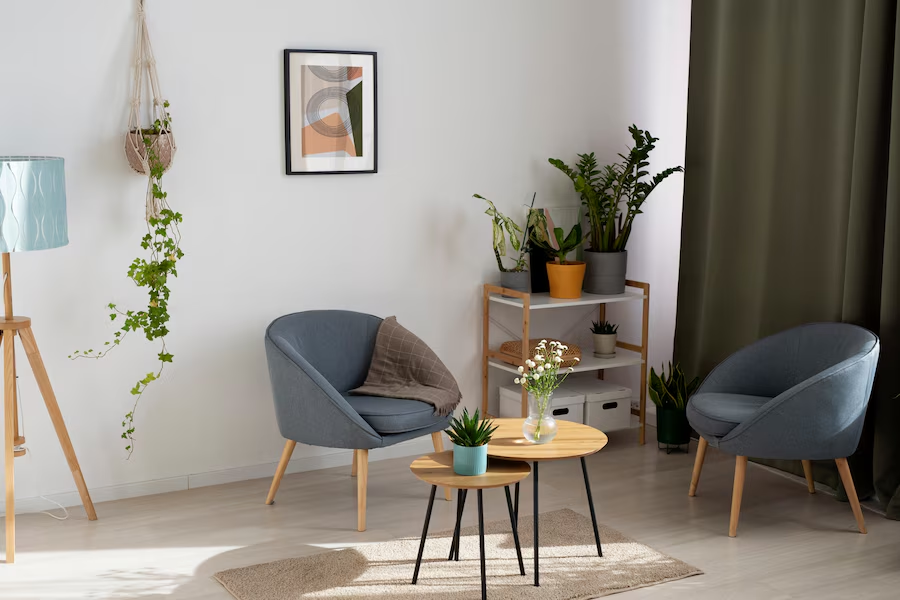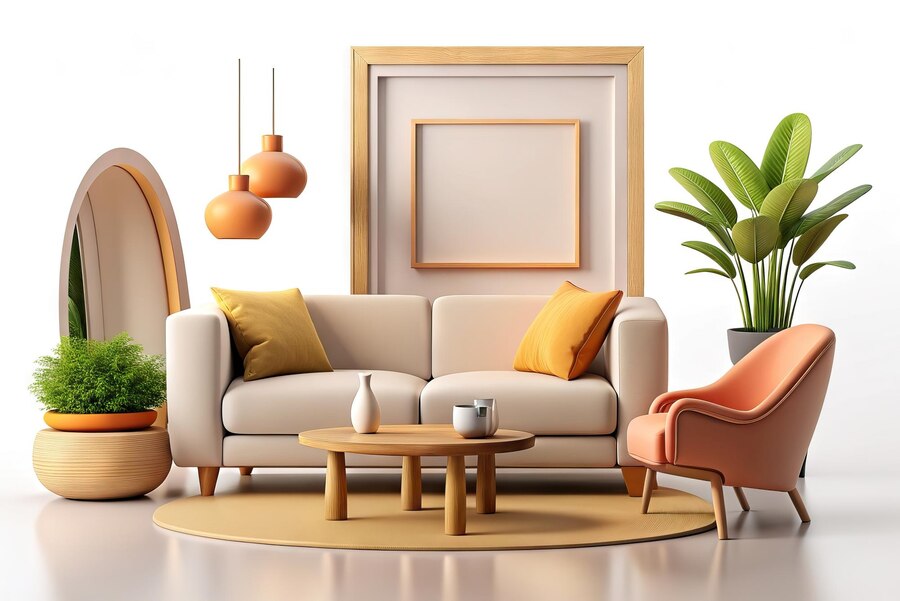"Creating Your Sanctuary: A Comprehensive Guide to Home Décor"
Transforming Spaces with Style, Comfort, and Personal Touches Human Touch in Home Décor
Home decor is the art of enhancing and beautifying the interior of a residence to create a comfortable, aesthetically pleasing, and functional space. It goes beyond mere aesthetics, encompassing the arrangement of furniture, selection of color schemes, and incorporation of decorative elements to evoke a specific ambiance or style.
Home décor is more than a visual experience; it’s an intimate reflection of our identities, values, and lifestyles. Infusing personal elements into home décor transforms a house into a home, providing a sanctuary filled with warmth and character. This expanded discussion explores how to incoey Elements of Adding Human Touch to Home Décor:
Personalization:
Family Photos and Mementos: Displaying family photos in creative ways, such as in a gallery wall arrangement or mixed into bookcases, keeps memories alive. Shadow boxes can house travel mementos and small souvenirs, turning everyday items into decorative pieces.
Custom Art and Crafts: Commissioning custom artwork or creating DIY crafts brings a unique touch. Painting, knitting, or pottery can produce one-of-a-kind décor items that resonate personally.
Comfortable Furniture: Invest in high-quality, comfortable furniture. Consider modular sofas for flexibility, recliners for relaxation, and beds with high-thread-count sheets and supportive mattresses.
Soft Textiles: Layering soft textiles like plush area rugs, velvet cushions, and faux fur throws can make a space feel cozier and more inviting. Choose materials that are soft to the touch and complement your color scheme.
Favorite Colors: Infuse your favorite colors into your home’s palette. This can be through paint, upholstery, or accent pieces. These colors evoke positive emotions and create a sense of personal satisfaction.
Color Psychology: Employ color psychology to evoke desired moods. Warm colors like reds and oranges can make a space feel cozy and inviting, while cool colors like blues and greens can create a calming atmosphere.
Heirlooms and Antiques: Display family heirlooms and antiques prominently. These items can be conversation starters and add a sense of history and continuity.
Handmade Gifts: Incorporate handmade gifts from friends and family into your décor. These pieces not only add personality but also serve as reminders of loved ones and special occasions.
Hobbies and Interests: Reflect your hobbies and interests in your home décor. This could include a dedicated reading nook for book lovers, a music corner for musicians, or a gallery wall for art enthusiasts.
Functional Spaces: Design spaces that support your daily routines and lifestyle, such as a well-organized home office, a cozy meditation corner, or a vibrant kitchen for cooking enthusiasts.
Indoor Plants: Incorporating indoor plants can bring a touch of nature indoors, improving air quality and adding a refreshing, lively feel to your space. Choose plants that suit your lifestyle and environment, such as low-maintenance succulents or lush ferns.
Natural Materials: Using natural materials like wood, stone, and cotton can create a warm and organic atmosphere, making your home feel more connected to nature. Consider reclaimed wood furniture, stone countertops, and cotton or linen fabrics.
Communal Areas: Design communal areas like the living room and dining room to encourage interaction and connection among family members and guests. Comfortable seating arrangements and inviting layouts can foster communication and togetherness.
Personal Retreats: Create personal retreats within your home where you can relax and recharge. These can be small reading nooks, cozy window seats, or peaceful garden corners.rporate the human touch into home décor, making every room a haven of comfort, style, and personal significance.


key Elements of Adding Human Touch to Home Décor:
- Personalization:
- Family Photos and Mementos: Displaying family photos in creative ways, such as in a gallery wall arrangement or mixed into bookcases, keeps memories alive. Shadow boxes can house travel mementos and small souvenirs, turning everyday items into decorative pieces.
- Custom Art and Crafts: Commissioning custom artwork or creating DIY crafts brings a unique touch. Painting, knitting, or pottery can produce one-of-a-kind décor items that resonate personally.
- Comfort and Livability:
- Comfortable Furniture: Invest in high-quality, comfortable furniture. Consider modular sofas for flexibility, recliners for relaxation, and beds with high-thread-count sheets and supportive mattresses.
- Soft Textiles: Layering soft textiles like plush area rugs, velvet cushions, and faux fur throws can make a space feel cozier and more inviting. Choose materials that are soft to the touch and complement your color scheme.
- Meaningful Color Schemes:
- Favorite Colors: Infuse your favorite colors into your home’s palette. This can be through paint, upholstery, or accent pieces. These colors evoke positive emotions and create a sense of personal satisfaction.
- Color Psychology: Employ color psychology to evoke desired moods. Warm colors like reds and oranges can make a space feel cozy and inviting, while cool colors like blues and greens can create a calming atmosphere.
- Sentimental Items:
- Heirlooms and Antiques: Display family heirlooms and antiques prominently. These items can be conversation starters and add a sense of history and continuity.
- Handmade Gifts: Incorporate handmade gifts from friends and family into your décor. These pieces not only add personality but also serve as reminders of loved ones and special occasions.
- Lifestyle Integration:
- Hobbies and Interests: Reflect your hobbies and interests in your home décor. This could include a dedicated reading nook for book lovers, a music corner for musicians, or a gallery wall for art enthusiasts.
- Functional Spaces: Design spaces that support your daily routines and lifestyle, such as a well-organized home office, a cozy meditation corner, or a vibrant kitchen for cooking enthusiasts.
- Natural Elements:
- Indoor Plants: Incorporating indoor plants can bring a touch of nature indoors, improving air quality and adding a refreshing, lively feel to your space. Choose plants that suit your lifestyle and environment, such as low-maintenance succulents or lush ferns.
- Natural Materials: Using natural materials like wood, stone, and cotton can create a warm and organic atmosphere, making your home feel more connected to nature. Consider reclaimed wood furniture, stone countertops, and cotton or linen fabrics.
- Interactive Spaces:
- Communal Areas: Design communal areas like the living room and dining room to encourage interaction and connection among family members and guests. Comfortable seating arrangements and inviting layouts can foster communication and togetherness.
- Personal Retreats: Create personal retreats within your home where you can relax and recharge. These can be small reading nooks, cozy window seats, or peaceful garden corners.


